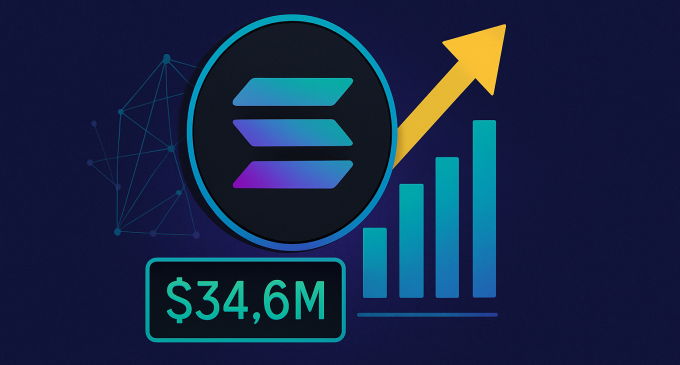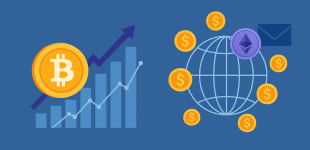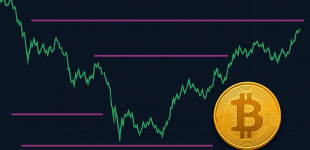
Introduction
Solana, often dubbed the “Ethereum killer,” has made a powerful entrance into the Layer 2 conversation with the announcement of a new project that has already raised a substantial $34.6 million in its Initial Coin Offering (ICO) phase. This development has captured the attention of analysts, investors, and developers alike, not only because of the funding size but due to what it signals about Solana’s evolving role in the decentralized finance (DeFi) and Web3 ecosystems.
The cryptocurrency community has long recognized the strengths of Solana: lightning-fast transactions, minimal gas fees, and a growing number of decentralized applications (dApps). However, as the demand for scalability and efficiency continues to skyrocket, Solana is now taking the bold step of integrating Layer 2 technology to solidify its place as a top-tier blockchain platform. The success of its new Layer 2 ICO is more than a fundraising milestone—it’s a turning point in Solana’s trajectory.
$34.6 Million Raised: What It Means For The Market?
Raising $34.6 million in the ICO phase is no small feat, especially in a market that has been cautious and selective in funding projects. This strong early capital inflow indicates growing confidence in Solana’s infrastructure evolution. The influx of funding is earmarked for protocol development, validator incentivization, marketing, and ecosystem growth.
More importantly, this ICO success positions Solana’s Layer 2 as one of the most anticipated launches in the second half of 2025. According to analysts, this could inject renewed momentum into the SOL token’s price performance. SOL has been a consistent top-10 token by market cap, but this strategic Layer 2 development could give it the competitive edge it needs to close the gap with Ethereum and other smart contract leaders.
The Role Of Layer 2 In Solana’s Ecosystem
Layer 2 solutions are typically used to enhance scalability, speed, and cost-efficiency without overburdening the base blockchain (Layer 1). While Ethereum has seen an explosion of Layer 2 protocols like Arbitrum, Optimism, and Base, Solana has traditionally operated without them—thanks to its high-speed proof-of-history mechanism. However, this new Layer 2 marks a shift in strategy.
Key Functions of the New Layer 2:
Off-chain Transaction Handling: Allows for faster transaction batching, reducing pressure on Layer 1.
Reduced Fees: Transactions are expected to cost a fraction of current Solana rates.
Smart Contract Compatibility: Seamless migration and deployment of dApps between L1 and L2.
Validator Incentives: Ensures decentralized consensus with rewards for honest nodes.
Cross-chain Bridge Integration: Brings easier swaps between Solana and EVM-compatible networks.
This Layer 2 is expected to significantly reduce network congestion, which has historically plagued Solana during times of heavy use (notably during the NFT boom of 2021–2022).
Analyst Outlook: SOL USD Set To Outperform
Experts are now forecasting that SOL/USD may outperform both Bitcoin and Ethereum in Q3 and Q4 of 2025. Several factors drive this bullish outlook:
1. Network Efficiency
By reducing costs and improving speed through Layer 2 scaling, Solana can accommodate more DeFi and GameFi activity without the bottlenecks that hinder other chains.
2. Investor Sentiment
The $34.6 million ICO is proof of strong institutional and retail belief in the roadmap. This psychological backing often translates to price action.
3. Ecosystem Growth
Layer 2 adoption may catalyze the next wave of Solana-based apps, particularly those requiring high throughput, such as decentralized exchanges (DEXs), yield platforms, and NFT marketplaces.
4. Reduced Risk of Outages
Solana’s historical network downtimes have drawn criticism. The Layer 2 infrastructure distributes traffic and mitigates single-chain pressure.
Tokenomics And ICO Participation
The Layer 2 ICO structure provides both transparency and early-mover advantage. Here’s what’s known about the tokenomics so far:
Total Supply: 1 billion tokens
ICO Allocation: 12% (120 million tokens)
Use of Funds: 40% Development, 20% Marketing, 15% Legal/Compliance, 25% Ecosystem Grants.
ICO Price: $0.288
Accepted Currencies: USDT, USDC, SOL.
The token will power L2 transaction fees, staking rewards, and governance proposals. Vesting schedules apply for early investors to reduce sell pressure.
Real-World Use Cases For Solana’s Layer 2
Layer 2 doesn’t just make Solana faster—it opens up new possibilities for blockchain applications. Some promising areas include:
1. High-Frequency Trading (HFT)
With ultra-low latency and zero slippage designs, HFT platforms can now build directly on Solana’s Layer 2.
2. GameFi & Metaverse
Gaming dApps requiring rapid, microtransactions (e.g., lootboxes, skin trades) can thrive in a low-fee L2 environment.
3. Social Tokens & Micro-Economies
Communities can launch tokens without worrying about exorbitant gas fees, encouraging tipping, peer-to-peer payments, and creator monetization.
4. AI-Powered dApps
Solana L2’s scalability provides a backbone for AI-integrated DeFi apps and prediction markets.
Institutional Adoption And Ecosystem Partnerships
The success of this ICO has drawn the attention of institutional players. Venture capital firms and hedge funds with prior exposure to Solana (such as Multicoin Capital and Jump Crypto) are rumored to be involved in the raise.
Additionally, leading dApps and infrastructure platforms on Solana are already exploring Layer 2 integrations, including:
- Raydium (DEX)
- Phantom Wallet (UX support)
- Solend (Lending protocol)
- Audius (Decentralized streaming)
Partnerships with major bridges like Wormhole and Allbridge will allow easy asset movement between ecosystems.
Risks And Cautionary Considerations
Despite the excitement, experts caution that Layer 2 success is not guaranteed. Potential risks include:
Security Audits Pending: Smart contracts are still being vetted.
User Confusion: Navigating between L1 and L2 may pose a UX hurdle for new users.
Liquidity Fragmentation: Some DEXes may split pools, impacting slippage and spreads.
Regulatory Scrutiny: ICO structures remain under observation by U.S. and EU regulators.
Transparency, developer engagement, and consistent communication will be critical for long-term success.
The Broader Impact On The Crypto Industry
Solana’s bold entrance into Layer 2 is more than a network enhancement—it signals a paradigm shift. For years, Ethereum monopolized the Layer 2 narrative. With this ICO, Solana is announcing its arrival as a serious contender in scalable blockchain infrastructure.
This also sets a precedent for other L1s like Avalanche and Cardano to reevaluate their scaling strategies. A successful Solana L2 could reignite the race for high-performance, low-cost DeFi ecosystems.
Price Forecast And Market Outlook For SOL In 2025
Based on current momentum, here are some mid-range analyst predictions for SOL in 2025:
Base Scenario: SOL reaches $160 by Q4 2025.
Bullish Scenario: Layer 2 sees 10M+ active users, SOL surges to $230+.
Bearish Scenario: Network congestion or hacks stall momentum, SOL retraces to $85.
The success of the Layer 2 ICO and mainnet launch in late 2025 will likely be the deciding factor for SOL’s market behavior.
Final Thoughts
The $34.6 million ICO for Solana’s new Layer 2 project represents more than just capital—it represents confidence. Investors, developers, and analysts alike are viewing this milestone as a pivotal evolution in Solana’s journey from fast Layer 1 chain to full-stack Web3 powerhouse.
If executed correctly, this Layer 2 could address scalability, reduce congestion, and propel SOL to the forefront of the next crypto bull cycle. The success of this venture could even challenge Ethereum’s dominance and redefine the Layer 2 narrative in 2025 and beyond.







There are no comments at the moment, do you want to add one?
Write a comment